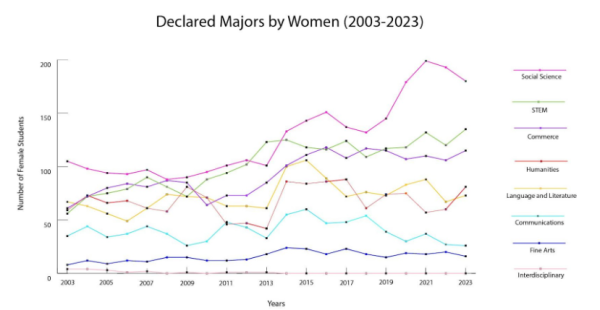W&L Law plans to decrease enrollment and financial aid
April 6, 2015
In the face of the changing market of legal education, the Washington and Lee University School of Law will be implementing a Strategic Transition Plan over the next five years.
The Transition Plan’s goals are to adjust the law school to the market while “preserving the School of Law’s special characteristics,” President Ken Ruscio said in his “Message to the Law School Community” about the plan.
In his address Ruscio said that the plan details that the Law School will be enrolling classes of about 100 students, resulting in a student body of 300. It is currently at 374, which includes the largest third-year class in Law School history.
In an email to the W&L community, Vice President of Finance and University Treasurer Steven McAllister said that the aggregate enrollment target is 290. McAllister said that this level of enrollment is “anticipated for the foreseeable future as there has yet to be compelling information that would reflect a rebound in the marketplace for legal education.”
The plan began when Ruscio and the Rector of the Board of Trustees created a Task Force in June 2014, led by Trustee Michael Missal, to conduct a review of the Law School and legal education in general. The task force included seven Trustee members in total and consulted with the University administration, Law School administration, and five law professors.
In October 2014 the Task Force presented their findings to the other Trustees. The Board directed the seniors Administration to create a “detailed plan by no later than the February 2015 Board meeting to achieve financial self-sufficiency for the Law School by 2018,” said Missal.
The Board also authorized an allocation from Law School resources to provide support for the school in the interim. It accepted the transition plan in the February 2015 meeting.
Law School Dean Nora Demleitner said that the enrollment downturn has been a national trend.
“We suffered disproportionately from decline in employment,” Demleitner said. She also said that the class of 2012 was a weak year, which impacted school rankings negatively.
Jarrett said that in 2012 a “good number” of students went on to get Masters in law, and those students count as unemployed in the numbers. Other competitors have a lot of law school funded positions, which W&L has never had.
The advantage of this is that it counts for employment percentages that affect rankings. Jarrett said that these aren’t “real jobs,” in a sense that they’re often short-lived and poorly paying.
“We didn’t play to the rankings test,” Jarrett said.
But prospective law students do tend to look at the rankings.
“Last year’s significant decline in ranking I’m sure had an effect,” Jarrett said, adding that prospective students put more emphasis on rankings than employers do.
Jarrett detailed a “whole building approach,” where faculty, administration, and alumni are all working together as a team with the students to help them find jobs.
The plan also says that tuition will increase at an annual two percent per year, and financial aid will decrease as well.
“It has been recognized that aid levels have become unsustainable over the long-term,” said McAllister.
Demleitner said that in the 90’s the Law School was substantially cheaper than its competitors, and even then it was known as a generous school, and as tuition increased scholarship giving increased.
She said that although financial aid will be decreasing, the employment numbers say that you can get hired coming out of the Law School and there are new national policies on student loans.
Another aspect of the plan is the downsizing in the faculty size and financial expenditures. There will be a faculty salary cut of 2% for those earning about $155,000 and all the other faculty salaries will be frozen for the next three years.
It is anticipated that even with these adjustments, compensation will continue to be competitive with peers ranked between 20th and 50th, according to McAllister.
Additionally six administrative and staff positions will be reduced over a five-year period. Demleitner said that nobody would be fired because those faculty members are expected to retire.
Law School Professor Brant Hellwig, who will be taking over as dean of the Law School this summer, said that because the University has addressed challenges for the current legal education market head on it provides a “level of comfort” for the faculty, because they know that the University is dedicated to having the Law School as a defining feature.
“Not every law school has had a university that’s done that,” he said.
The Law School operations budget will also be reduced by 10 percent in the upcoming school year, except for the library, which will increase by two percent.
Demleitner said the cause for the increase is because for the past six years the library budget has taken huge decreases, and it’s now at the point where the library is being impacted.
Lastly, there will be an increase of the payout of the law endowment to 7.5 percent from now to the school year 2017-18.
“I believe that the plan is realistic and achievable, and will allow the Law School to maintain its special characteristics, including the high quality of the student body, faculty, administration, and staff,” Missal said.
Brant said that although this is not a great position to be in, “I love being here, I love teaching the students here, I love the environment we create that’s different from most law schools, and reduced class sizes – that’s pretty exciting.”
He added, “I think it’s actually a great time for this law school.”













